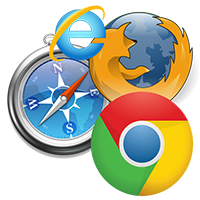 You install a free program, and the software is fine, it does as advertised, but… you load up Google Chrome or Firefox and you see that your search bar has been changed to some engine you’ve never heard of, an engine that couldn’t snow in Siberia, and there are a dozen other doodads and widgets cluttering up your browser including MP3 converters, Youtube downloaders, shopping apps and all kinds of features you would never download and install on purpose, and will never use.
You install a free program, and the software is fine, it does as advertised, but… you load up Google Chrome or Firefox and you see that your search bar has been changed to some engine you’ve never heard of, an engine that couldn’t snow in Siberia, and there are a dozen other doodads and widgets cluttering up your browser including MP3 converters, Youtube downloaders, shopping apps and all kinds of features you would never download and install on purpose, and will never use.
Here’s a few tips for dealing with all that bloatware:
Give Your Browser A Fresh Install
Honestly, this is often easier than sifting through your options and settings and uninstalling and deleting every single thing individually. A fresh install for your web browser lets you chunk the whole thing in the trash and start over without having to Google “How do I get rid of _____” for a dozen different things. You can save your bookmarks, and you won’t need to stress about why your browser isn’t working.
Check Your Uninstall List
If your new software installed fifty things into your browser, it may have installed other programs, as well. Find your uninstaller (“Uninstall a Program” for most Windows systems), sort by date, most recent to least recent, and look for anything that you don’t recognize.
Download From The Source When Possible
There are a lot of apps out there that aren’t available from their developer’s site anymore. But, when possible, it’s better to download from the source than to get your software through torrents or websites that share freeware. People often take freeware and shareware apps and add installers for their own adware to it before redistributing.
Uncheck All Those Installers
Sometimes, a piece of freeware with no developer support can only be attained through questionable sources. No matter where you get your software, no matter what you’re installing, pay attention to the installation process. Keep an eye out for anything you can uncheck and keep from installing.
No matter how careful you may be when downloading and installing new software, sometimes it happens, sometimes it’s unavoidable, and you wind up with a browser that only shows you about 200×1100 pixels of content with all the extra junk cluttering it up. These widgets are usually not malware, just junk. It’s unlikely that you’re infected if you find that your search engine has been changed, but it never hurts to run a virus check.





